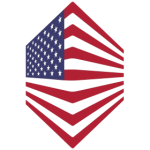NR-525: Theoretical Foundations and Instructional Strategies in Teaching and Learning
NR-525: Theoretical Foundations and Instructional Strategies in Teaching and Learning.
Order 100% plagiarism free essay on Theoretical Foundations
Purpose
NR-525: Theoretical Foundations and Instructional Strategies
in Teaching and Learning. The purpose of this assignment is to provide an opportunity for learners to: (a) demonstrate knowledge related to a self-selected instructional method topic, (b) present the topic to peers while demonstrating appropriate instructional methodology, (c) share beneficial instructional techniques or methods with peers and (d) provide a self-critique of the presentation.
Course Outcomes
Through this assignment, the student will demonstrate the ability to:
(CO#2) Explore instructional strategies reflective of education theory and evidence-based practice. (PO 1)
(CO#3) Use effective verbal, written, and electronic communication and informational technologies for educational environments. (PO 3)
(CO#5) Evaluate instructional strategies that foster learner development in the cognitive, psychomotor, and affective domains. (PO 1, 4)
Due Date: Sunday 11:59 p.m. MT at the end of Week 6
Total Points Possible: 325
REQUIREMENTS:
This is a two-part assignment: The first part of the assignment is a presentation on an instructional method/issue related to nursing education. The presentation will be shared with classmates via PowerPoint Show. You can access the directions on creating a PowerPoint Show in Course Resources. Please practice using this presentation tool before working on the assignment. The second part of the assignment is a written paper critiquing your presentation technique.
PART I – THE PRESENTATION
NR-525: Theoretical Foundations and Instructional Strategies in Teaching and Learning.
Order 100% plagiarism free essay on Theoretical Foundations
1. The presentation is to include:
o a brief introduction of the speaker, the selected topic, and the target audience. The target audience is to be nurse educators in either an academic setting or a clinical setting. The target audience can also be your classmates in this course.
o a comprehensive description/explanation of the topic, description of how the topic applies in either a nursing academic setting or clinical health setting
o a discussion on the benefits and potential disadvantages or difficulties of the topic
o a summary of the presentation topic
2. A minimum of seven scholarly references are required for the presentation. Textbooks may not be used as references. The references are to be included in the final page of the critique paper.
3. The topic must be presented as an oral presentation with a PowerPoint Show included; review Course Resources for resources to guide the audio recording of the presentation.
4. You will upload your oral presentation and the Critique Paper to the Dropbox in W6 for instructor assessment.
5. The presentation recording will also be attached in the W7 threaded discussion for classmates to review during Week 7 of the course.
Part II – THE CRITIQUE
NR-525: Theoretical Foundations and Instructional Strategies in Teaching and Learning.
Order 100% plagiarism free essay on Theoretical Foundations
A scholarly written detailed critique of the student’s own presentation will be developed by the student.
1. The critique will include
a. a self-assessment of the presentation:
• Was there a brief introduction of the speaker, the selected topic, and the target audience
• Was the purpose of the presentation clear?
• Was the topic appropriate for audience?
• Was application of the topic in either a nursing academic setting or health setting clearly stated?
• Were the main points of the presentation clear?
• Was the body of the presentation clearly organized?
• Were sources used and appropriately cited?
• Was the topic well explained?
• Were the benefits and potential disadvantages clearly identified
• Did the speaker summarize the presentation?
• Did the speaker include a strong close?
• Did the visual aids add to speech?
• Were the visual aids easy to read and not crowded with words?
• Was the appearance of the presentation professional?
b. a self-assessment of the delivery skills:
a. The speaker presented the content in a clear and easy to understand manner.
b. The speaker varied the pace of the presentation, using pauses to aid the understandability of the topic.
c. The speaker used language appropriate for the audience
d. The speaker had an easy transition between sections of the presentation
e. The speaker was easy to hear and sounded conversational
f. If the speaker used humor, it was appropriate for the target audience
g. The speaker avoided jargon if necessary
h. Vocal fillers (“um,” “uh,” “like”) were under control
i. The speaker made the presentation interesting to the audience
Instructional Methods Topics:
NR-525: Theoretical Foundations and Instructional Strategies in Teaching and Learning.
Order 100% plagiarism free essay on Theoretical Foundations
From the topic list noted below, select a topic of interest. If a learner would like to self-identify a topic, it must be approved by the course instructor. Students are to identify the selected topic in the Week 3 discussion thread marked Instructional Method Topic Selection. Students are not to choose a topic already selected by another student.
The following topics, from which a student may select, are provided only to assist the learner and not to limit topic selection:
• Retention of learning
• Resolving grade disputes
• Teaching value-sensitive subjects
• Uncivil behaviors demonstrated by learners
• Problem-based learning
• Reflective practice by learners
• Clinical preceptors
• Misbehavior by a faculty member
• Learners who have a visual, auditory, or other physical disability
• Using humor in the classroom environment
• Developmental characteristics and readiness to learn (i.e. children, adolescents, adults)
• Advantages/Disadvantages related to using standardized tests to determine learner’s graduation from a nursing program
• Advantages/Disadvantages related to using teacher-made exams within web-based courses
• Learner’s with limited skills in mathematics
• Learner’s with limited skills in reading comprehension
• Substance-impaired learners
• Maintaining records of students’ performance
• Working with students who are older than the faculty member
• Maintaining academic honesty in a classroom setting
• Making clinical assignments for learners
• Teaching in a non-academic setting (i.e. community, home health)
• Health status and readiness to learn
• Resolving concerns related to large class size (i.e. 75+ learners)
• Advantages/Disadvantages related to using concept maps vs. nursing care plans
• Flipping the classroom
• Students with English as a second language
• Engaging Millennial Learners
Purpose
The purpose of this assignment is to provide an opportunity for learners to: (a) demonstrate knowledge related to a self-selected instructional method topic, (b) present the topic to peers while demonstrating appropriate instructional methodology, (c) share beneficial instructional techniques or methods with peers and (d) provide a self-critique of the presentation.
Course Outcomes
Through this assignment, the student will demonstrate the ability to:
(CO#2) Explore instructional strategies reflective of education theory and evidence-based practice. (PO 1)
(CO#3) Use effective verbal, written, and electronic communication and informational technologies for educational environments. (PO 3)
(CO#5) Evaluate instructional strategies that foster learner development in the cognitive, psychomotor, and affective domains. (PO 1, 4)
Due Date: Sunday 11:59 p.m. MT at the end of Week 6
Total Points Possible: 325
REQUIREMENTS:
This is a two-part assignment: The first part of the assignment is a presentation on an instructional method/issue related to nursing education. The presentation will be shared with classmates via PowerPoint Show. You can access the directions on creating a PowerPoint Show in Course Resources. Please practice using this presentation tool before working on the assignment. The second part of the assignment is a written paper critiquing your presentation technique.
PART I – THE PRESENTATION
1. The presentation is to include:
o a brief introduction of the speaker, the selected topic, and the target audience. The target audience is to be nurse educators in either an academic setting or a clinical setting. The target audience can also be your classmates in this course.
o a comprehensive description/explanation of the topic, description of how the topic applies in either a nursing academic setting or clinical health setting
o a discussion on the benefits and potential disadvantages or difficulties of the topic
o a summary of the presentation topic
2. A minimum of seven scholarly references are required for the presentation. Textbooks may not be used as references. The references are to be included in the final page of the critique paper.
3. The topic must be presented as an oral presentation with a PowerPoint Show included; review Course Resources for resources to guide the audio recording of the presentation.
4. You will upload your oral presentation and the Critique Paper to the Dropbox in W6 for instructor assessment.
5. The presentation recording will also be attached in the W7 threaded discussion for classmates to review during Week 7 of the course.
Part II – THE CRITIQUE
NR-525: Theoretical Foundations and Instructional Strategies in Teaching and Learning.
Order 100% plagiarism free essay on Theoretical Foundations
A scholarly written detailed critique of the student’s own presentation will be developed by the student.
1. The critique will include
a. a self-assessment of the presentation:
• Was there a brief introduction of the speaker, the selected topic, and the target audience
• Was the purpose of the presentation clear?
• Was the topic appropriate for audience?
• Was application of the topic in either a nursing academic setting or health setting clearly stated?
• Were the main points of the presentation clear?
• Was the body of the presentation clearly organized?
• Were sources used and appropriately cited?
• Was the topic well explained?
• Were the benefits and potential disadvantages clearly identified
• Did the speaker summarize the presentation?
• Did the speaker include a strong close?
• Did the visual aids add to speech?
• Were the visual aids easy to read and not crowded with words?
• Was the appearance of the presentation professional?
self-assessment of the delivery skills:
The speaker presented the content in a clear and easy to understand manner.
The speaker varied the pace of the presentation, using pauses to aid the understandability of the topic.
The speaker used language appropriate for the audience
The speaker had an easy transition between sections of the presentation
The speaker was easy to hear and sounded conversational
If the speaker used humor, it was appropriate for the target audience
The speaker avoided jargon if necessary
Vocal fillers (“um,” “uh,” “like”) were under control
The speaker made the presentation interesting to the audience
Instructional Methods Topics:
NR-525: Theoretical Foundations and Instructional Strategies in Teaching and Learning.
Order 100% plagiarism free essay on Theoretical Foundations
From the topic list noted below, select a topic of interest. If a learner would like to self-identify a topic, it must be approved by the course instructor. Students are to identify the selected topic in the Week 3 discussion thread marked Instructional Method Topic Selection. Students are not to choose a topic already selected by another student.
The following topics, from which a student may select, are provided only to assist the learner and not to limit topic selection:
• Retention of learning
• Resolving grade disputes
• Teaching value-sensitive subjects
• Uncivil behaviors demonstrated by learners
• Problem-based learning
• Reflective practice by learners
• Clinical preceptors
• Misbehavior by a faculty member
• Learners who have a visual, auditory, or other physical disability
• Using humor in the classroom environment
• Developmental characteristics and readiness to learn (i.e. children, adolescents, adults)
• Advantages/Disadvantages related to using standardized tests to determine learner’s graduation from a nursing program
• Advantages/Disadvantages related to using teacher-made exams within web-based courses
• Learner’s with limited skills in mathematics
• Learner’s with limited skills in reading comprehension
• Substance-impaired learners
• Maintaining records of students’ performance
• Working with students who are older than the faculty member
• Maintaining academic honesty in a classroom setting
• Making clinical assignments for learners
• Teaching in a non-academic setting (i.e. community, home health)
• Health status and readiness to learn
• Resolving concerns related to large class size (i.e. 75+ learners)
• Advantages/Disadvantages related to using concept maps vs. nursing care plans
• Flipping the classroom
• Students with English as a second language
• Engaging Millennial Learners






